American anti-aircraft machine guns
Since the advent of military airplanes, machine guns have become one of the most effective means of dealing with them. At first, these were standard infantry models, used from standard machines or handicraft devices for anti-aircraft fire. As the altitude and flight speed of combat aircraft, as well as their security, increased, specially designed multi-barreled and large-caliber anti-aircraft machine-gun mounts were adopted, into the ammunition of which armor-piercing incendiary and tracer incendiary cartridges were specially introduced to increase the effectiveness of firing at air targets. This approach fully applied to the American anti-aircraft machine guns, created in the interwar period and during the Second World War.
The first American machine gun used for firing at air targets was the Colt-Browning M1895. it weapondesigned by John Browning was purchased by the American fleet in 1896. At the same time, the 6 mm Lee Navy cartridge was used in the fleet, and the 6-30 Krag cartridge was used in the army. Subsequently, the machine gun was converted for 40 × 7,62 mm ammunition (63-30 Springfield).
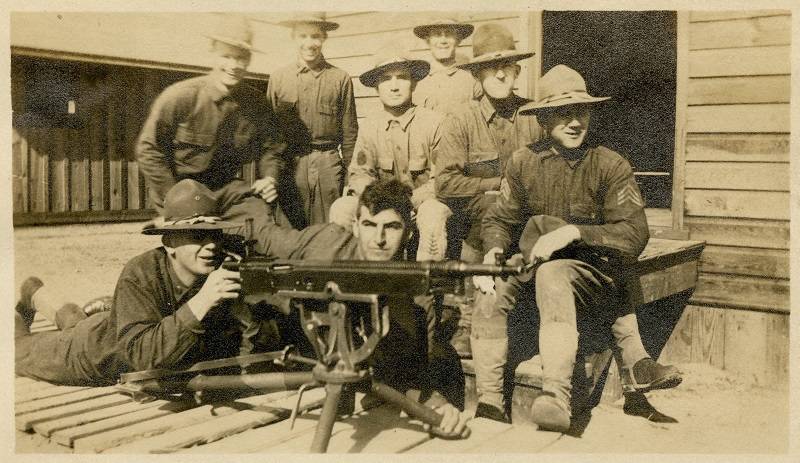
В history The machine gun entered service as the first model of an automatic weapon adopted for service, which implements the principle of removing powder gases. Thanks to the use of air cooling of the barrel, the machine gun turned out to be relatively light. The mass of the machine gun with a tripod machine was 45,5 kg. Food was carried out from a canvas tape for 100 and 250 rounds. The rate of fire was 420-450 rds / min.
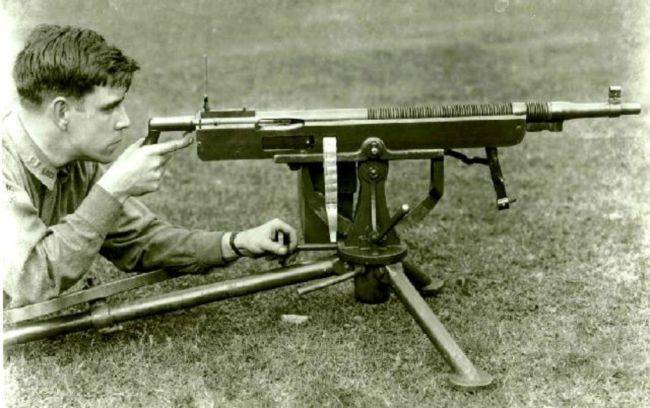
Due to the fact that the Colt-Browning M1895 machine gun had a relatively small mass, during the First World War, they were armed with combat aircraft. Back in 1910, the American Colonel Davidson made an attempt to create an anti-aircraft self-propelled installation, having mounted two machine guns on the chassis of a Cadillac G passenger car, capable of firing at air targets.
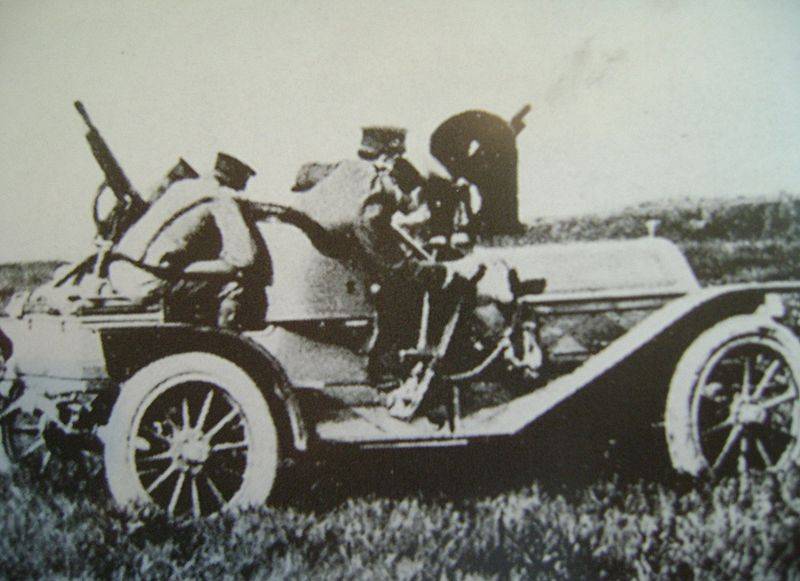
The installation was named Balloon Destroers. Two such machines were built, but the military department showed no interest in the project. Subsequently, some of the Colt-Browning M1895 machine guns were adapted for anti-aircraft fire. To do this, they were installed on machines with an elongated rack and equipped with anti-aircraft sights.
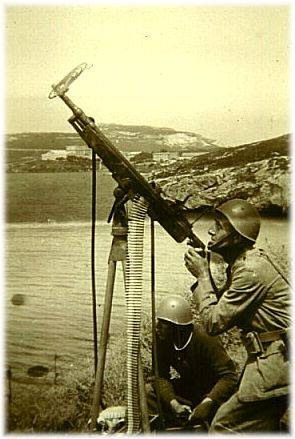
However, the Colt machine gun was never popular in the US Army. This was due to the fact that, due to the design features, the weapon in the position had to be raised high enough above the ground. In addition, the air-cooled barrel quickly overheated, making the machine gun unable to compete with the water-cooled Maxim. In this regard, by the end of the 1920s, the US armed forces abandoned the Colt-Browning M1895 machine gun.
Much more widespread in the American army was the Browning M1917 machine gun, which was put into service shortly before the end of the First World War. This weapon chambered for 7,62 × 63 mm, created by John Browning in collaboration with Colt, was an analogue of the Maxim machine gun, but had a simpler design.
In general, this machine gun, in terms of efficiency and reliability, fully met the requirements for it. In the late 1930s, based on operating experience, the machine gun was modernized, after which it received the designation M1917A1. In 1926, the production of machine guns with a sight began, which allowed effective firing at both ground and air targets. The standard tripod machine provided a vertical aiming angle sufficient for anti-aircraft fire.
The weight of the machine gun in the combat position on the machine was 47 kg. The capacity of the tape is 250 rounds. Rate of fire - 600 rounds / min. Thanks to the water cooling, the M1917A1 could conduct intense fire for a long time. In addition to the infantry tripod mount, machine guns were mounted on armored vehicles, on anti-aircraft turrets. During the war years, as part of the provision of military assistance, the M1917A1 were supplied to the allies in the anti-Hitler coalition and were used throughout the war, including as anti-aircraft.
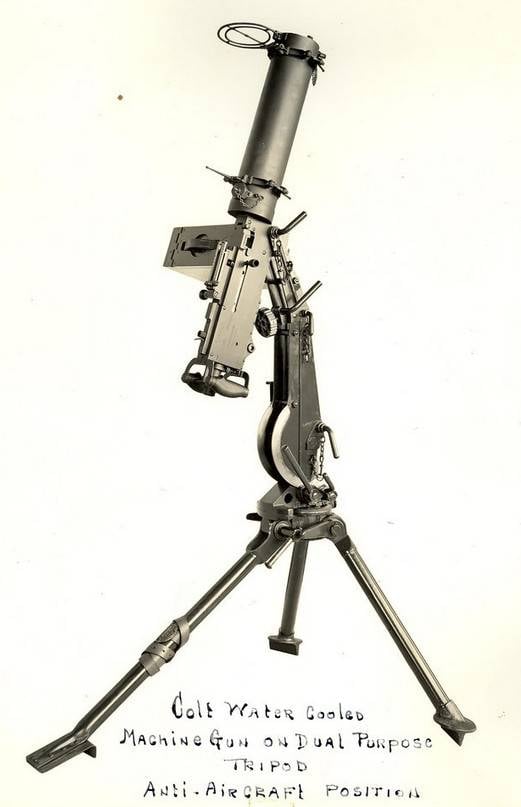
Due to the fact that the American army during World War II fought almost all the time under an umbrella from a fighter cover, and air defense units had a sufficient number of 12,7-mm machine-gun mounts, 37-40-mm anti-aircraft guns and 90-mm anti-aircraft guns, infantry machine guns Browning M1917A1 did not play a decisive role in the fight against the air enemy. However, this machine gun was widespread in the armed forces of the United States and allied countries, and therefore the machine gun crews probably have shot down German, Italian and Japanese combat aircraft.
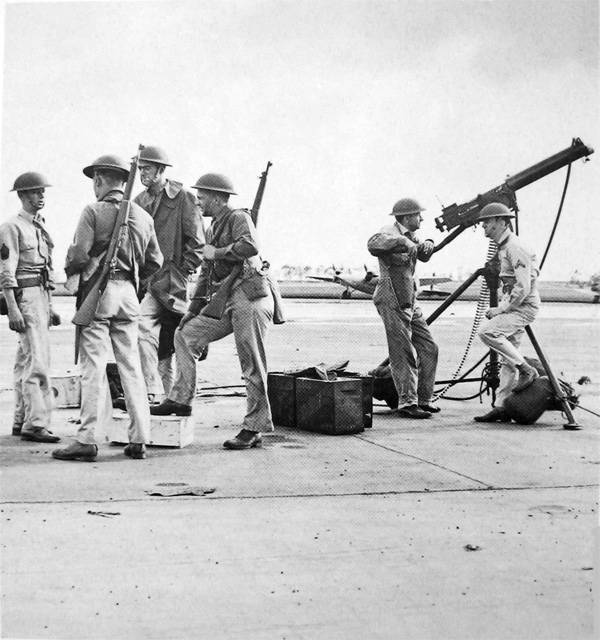
As mentioned earlier, the Browning M1917A1 machine gun was very reliable and, thanks to the water-cooled barrel, could conduct intense fire for a long time. But after the end of the First World War, it became clear that this machine gun does not meet modern requirements in terms of the ability to carry over long distances and mobility on the battlefield. As a result, a modification of the Browning M1919 machine gun in the M1919A4 version with a lightweight M2 tripod machine was adopted. It was this machine gun that became the main weapon of the American troops during the Second World War. Possessing a relatively light weight, the М1919А4 machine gun in the infantry served as a company and battalion fire support, which proved to be a weapon of high reliability.
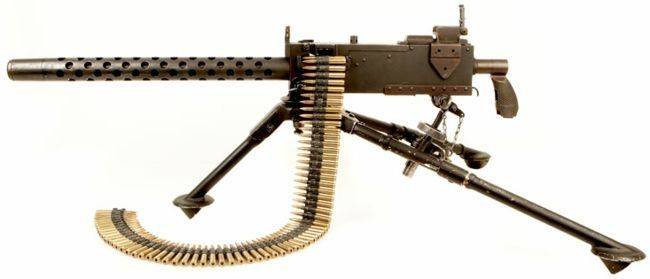
The main difference between the M1919A4 and the M1917A1 was the use of a massive air-cooled barrel, enclosed in a perforated casing. A quick replacement of the barrel in combat conditions was not provided, since after each change of the barrel, the machine gun needed to adjust the gap between the breech of the barrel and the shutter mirror. In addition, the machine gun received a new low-profile M2 machine, which had simplified (compared to the M1917 machine) guidance mechanisms and significantly less weight. The weight of the Browning М1919А4 machine gun together with the machine was 20,5 kg. Rate of fire - 400-450 rds / min. Food was carried out from a tape for 250 rounds.
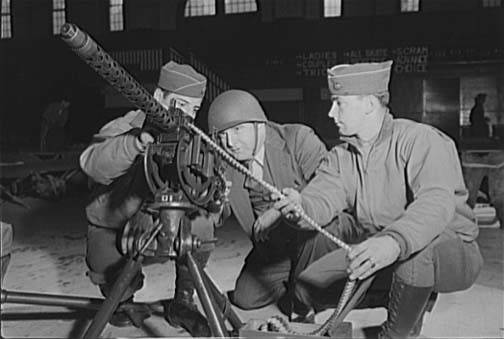
Although the standard M2 infantry machine did not allow firing with high elevation angles, the M1919A4 machine gun was very often used as an anti-aircraft gun, for which it was mounted on various turrets and specially created machines. Anti-aircraft machine guns of this type were standardly equipped with many American Tanks and armored vehicles.
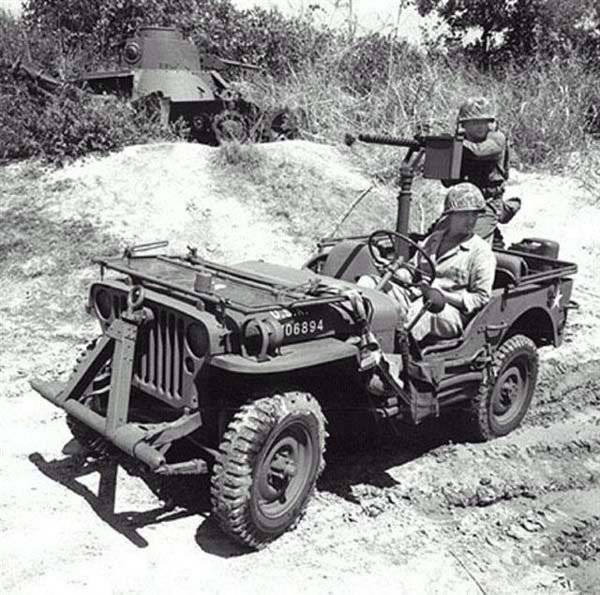
The carriers of the machine gun were often also light off-road vehicles Willys MB. Such vehicles with machine-gun armament were used for reconnaissance and patrol services, escorting transport convoys, guarding headquarters and important rear facilities. The machine gun, mounted on a swivel with equal convenience, could be used for firing at ground and air targets.
After the end of World War II, the М1919А4 machine gun became very widespread, and in a number of countries, despite its advanced age, it is still used today.
Although American heavy machine guns chambered for rifle cartridges were generally in line with world standards, in the second half of the 1930s it became clear that larger caliber weapons were required to effectively combat front-line bombers and attack aircraft. The use of metal in the design of aircraft, the protection of fuel tanks and their pressurization with neutral gas, as well as the introduction of bulletproof glass and other elements of armor protection led to the fact that the damaging effect of rifle-caliber bullets when firing at combat aircraft decreased sharply. In addition, it was highly desirable to increase the effective firing range at fast-moving air targets. As you know, machine guns firing with rifle cartridges, this figure did not exceed 500 m.
In this regard, in a number of countries in the pre-war period, machine guns of 12,7-15 mm caliber were created. In the United States, the niche of large-caliber machine guns designed to combat light armored vehicles, aviation, manpower and destruction of light field fortifications were taken by the very successful 12,7 mm Browning .50 Caliber Machine Gun, better known as Browning M2.
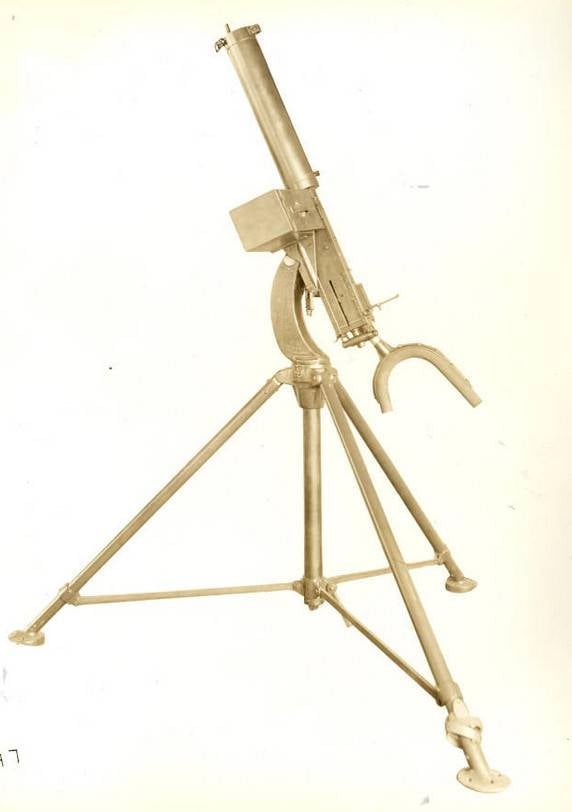
This weapon was created in 1932 on the basis of the 12,7 mm Browning M1921 machine gun. In turn, the design of the large-caliber M1921 largely repeated the M1917, which used rifle caliber cartridges. The new 12,7 mm ammunition was also obtained by proportionally increasing the American 7,62 mm rifle cartridge to the Springfield M1903 rifle. This, in fact, a mobilization technical solution turned out to be extremely successful.
The 12,7 × 99 mm cartridge, also known as the 50 BMG, was almost twice as effective as the 7,62 × 63 mm rifle cartridge in terms of effective fire range. An M1 armor-piercing bullet weighing 48,6 g had an initial velocity of 808 m / s and at a distance of 500 m, when hit at a right angle, it could pierce a 16-mm armor plate.
However, in the 1920s, the command of the American army did not see the need for a multi-purpose heavy machine gun, and for this reason, the release of the Browning M1921A1 modification was only started in 1930.
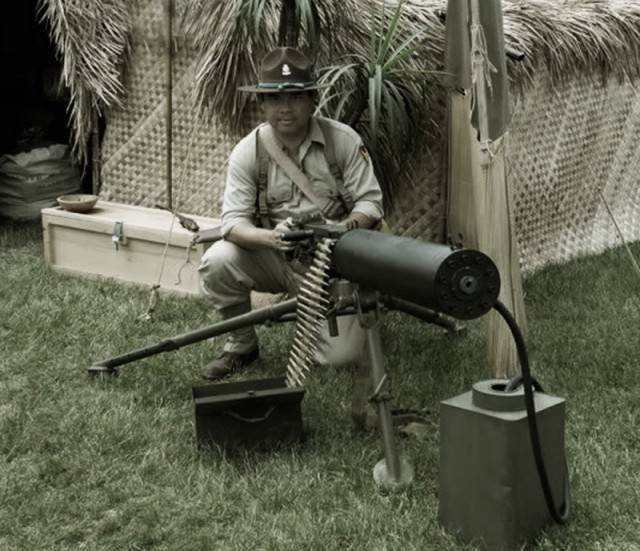
The machine gun was mounted on a tripod machine. Thanks to water cooling, he could conduct a fairly long fire with a rate of fire of 550-600 rds / min. The mass of the machine gun on the machine was 54,8 kg, and the casing must be filled with water before firing, which did not make the weapon lighter. The accessory kit for the large-caliber machine gun included a hand-held water pump for pumping coolant in the casing.
Nevertheless, the M1921A1 machine gun received recognition in the army and navy and was produced in single and twin versions. 12,7 mm machine guns were used on tripod field machines and pedestal mounts. In 1933, the 12,7 mm machine gun was upgraded, and an air-cooled barrel modification appeared.
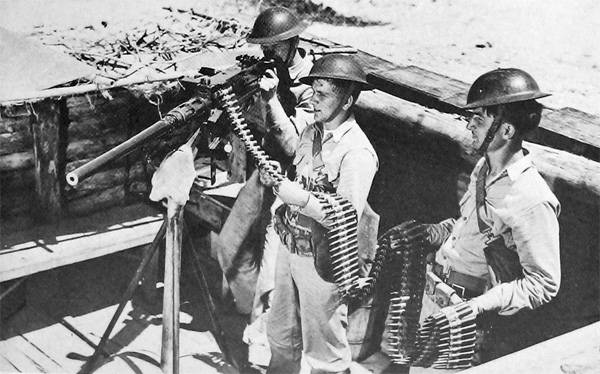
The water-cooled machine gun was used mainly to combat enemy aircraft, and the air-cooled machine gun was used as a universal one.
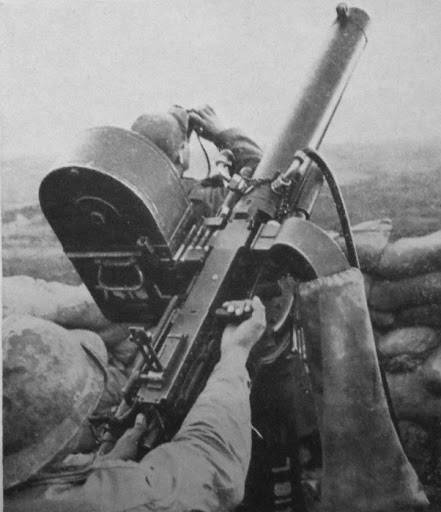
Water-cooled anti-aircraft guns were a fairly powerful means of near-field air defense. However, the use of this effective anti-aircraft weapon in a portable version was difficult due to its excessive weight.
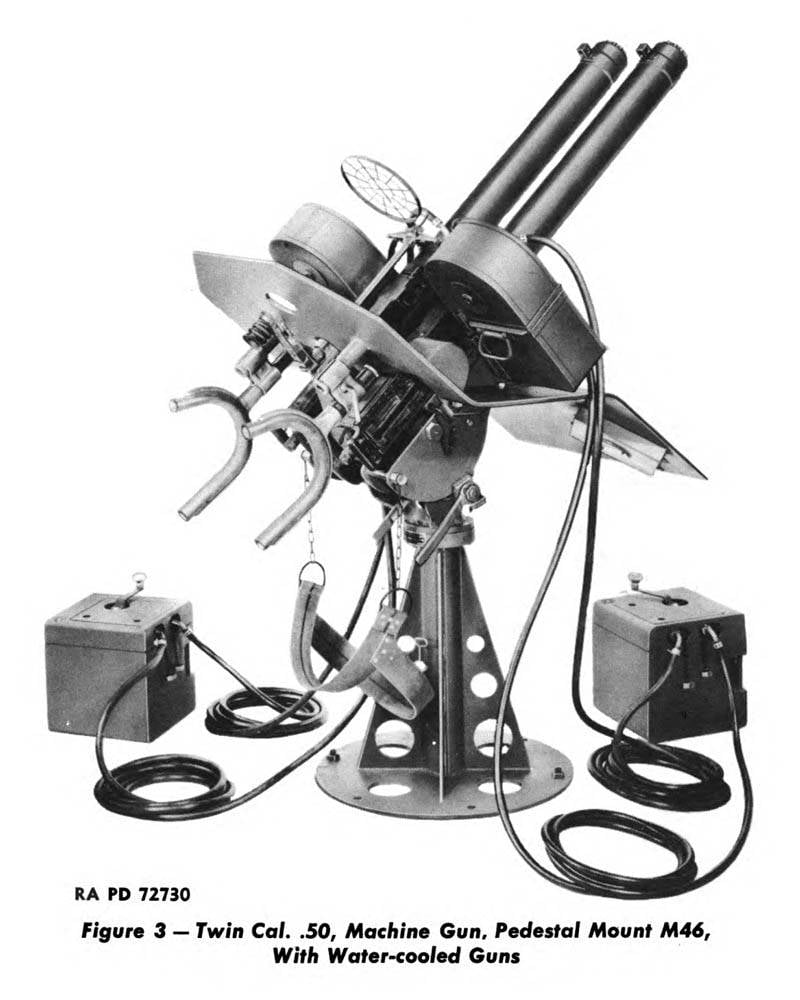
On the decks of warships and coastal defense facilities, the M46 coaxial machine gun with water cooling was widely used. To prevent the boiling of the coolant during prolonged shooting, a hand pump was provided for each barrel, connected to the casing by reinforced hoses.
Subsequently, in order to avoid overheating for the infantry version, a barrel with thicker walls was developed, so the infantry machine gun received the designation Browning Machine Gun, Cal. .50, M2HB, Flexible - 0,5-inch Browning machine gun, model М2НВ with a heavy barrel, or abbreviated М2НВ. In 1938, the M2NV received a longer barrel, due to the abandonment of water cooling, the body weight of the machine gun decreased to 38 kg. Rate of fire 480-550 rds / min. In this form, this weapon is practically unchanged to this day.
By the time the United States entered the war, 12,7-mm "Browning" of various modifications had firmly occupied their niche in the army and navy. Army units preferred air-cooled machine guns. However, the troops had a lot of water-cooled machine guns, which mainly covered stationary objects.
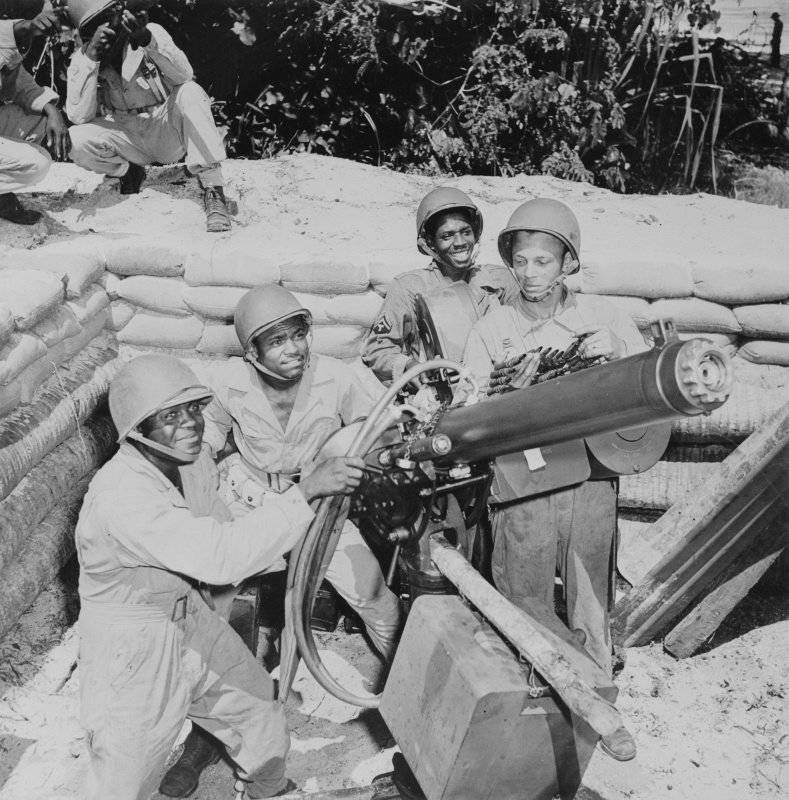
Twin 12,7 mm water-cooled anti-aircraft guns were also installed on trucks. Such improvised SPAAGs were used during the fighting in North Africa and Italy.
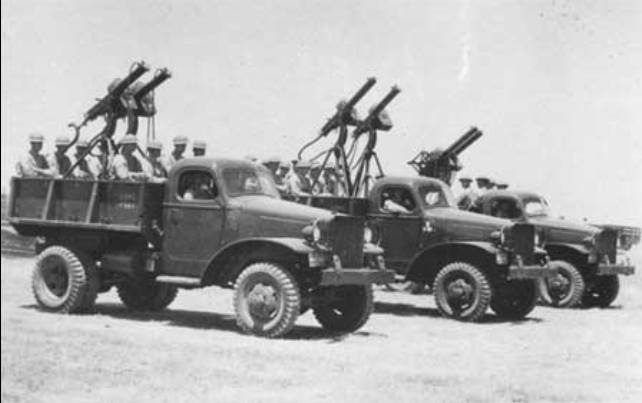
The troops prepared for the Normandy landings mainly had 50 caliber M2NV machine guns with a heavy air-cooled barrel. To increase mobility, they were often mounted on light jeeps and armored personnel carriers.
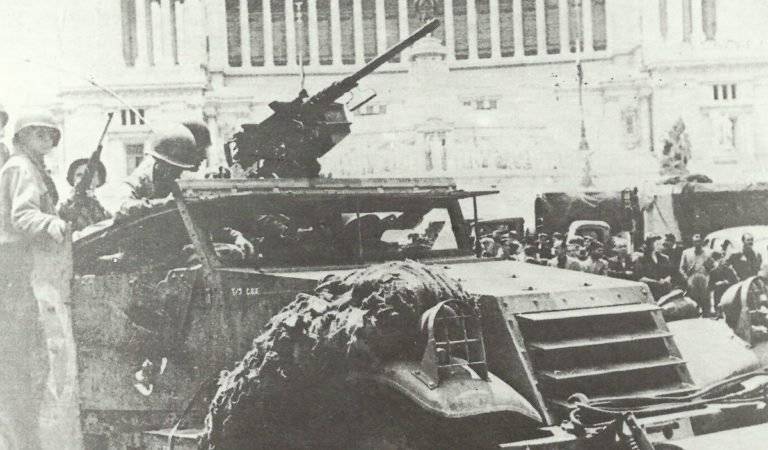
However, to provide air defense of field airfields and other stationary objects, paired installations of M2NV machine guns were sometimes used. The mass of such a 12,7-mm anti-aircraft twin in a combat position together with a turret was about 100 kg. In this connection, aiming the paired installation at the target required significant physical effort.
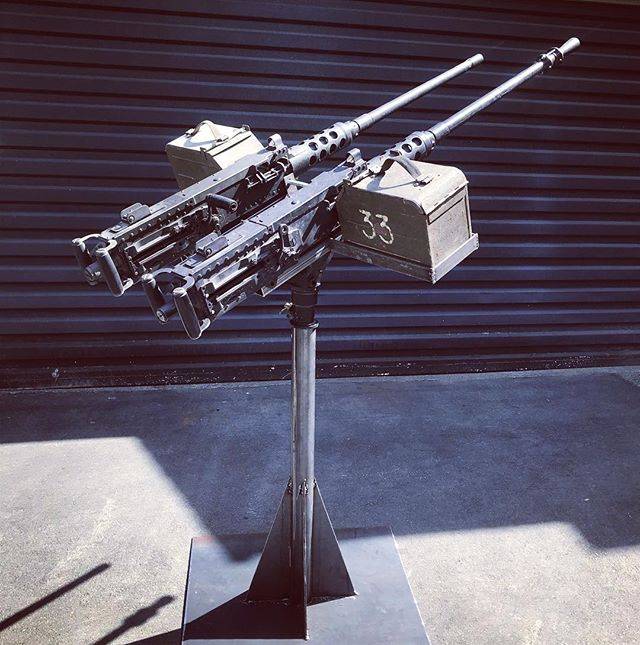
However, for all their merits, 12,7 mm machine guns did not provide the required density of anti-aircraft fire when firing at fast-moving air targets. In addition, the anti-aircraft unit armed with single-barreled ZPUs, taking into account the provision of each calculation with a separate vehicle, turned out to be too cumbersome. In this regard, the command of the ground forces expressed a desire to receive a multi-barreled self-propelled anti-aircraft gun with mechanized aiming of weapons at a target. The first specialized vehicle designed to repel enemy aircraft attacks was the ZSU based on the M2 tractor. The tractor was equipped with a Bendix aviation turret with two large-caliber machine guns. However, the M13 anti-aircraft self-propelled gun on the chassis of the M3 half-track armored personnel carrier, armed with a coaxial 12,7 mm Maxson M33 machine gun, became more viable.
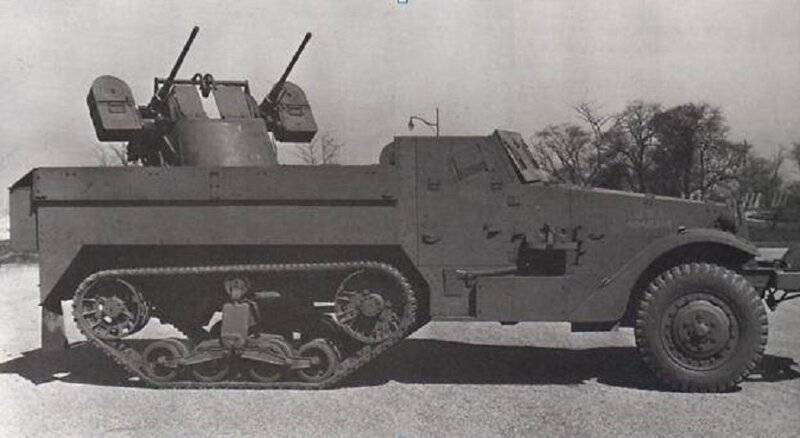
The mass of the ZSU M13 in the combat position was 8,7 tons. The crew was 5 people. Armor 6-13 mm thick provided protection against rifle caliber bullets and shrapnel. Carburetor engine with 147 hp could accelerate the car on the highway to 70 km / h. The power reserve is up to 300 km.
In general, the M13 anti-aircraft self-propelled gun has proven itself positively. In the period from March to November 1943, 1103 vehicles were produced. But based on the combat experience of the WL Maxson Corporation, it was proposed to create a quad ZSU.
In 1943, production of the M45 Quadmount began. The weight of the installation in the firing position was 1087 kg. The effective firing range at air targets is about 1000 m. The rate of fire is 2300 rounds per minute. The capacity of the cartridge boxes on the installation is 800 rounds. The general ammunition load is 2000 rounds. The targeting of the installation was carried out by electric drives powered by a gasoline generator. Two lead-acid storage batteries served as a backup power source. The targeting drive motors were powerful, capable of withstanding the heaviest loads. Thanks to the electric drives, the installation had a guidance speed of up to 60 degrees per second.
This ZPU was installed on various chassis. But the most common base for self-propelled anti-aircraft guns were the M3 and M5 wheeled-tracked armored personnel carriers. ZSU on the M3 armored personnel carrier chassis is known as M16, and on the basis of M5 - M17. The M16 anti-aircraft self-propelled gun was mainly used by the US armed forces, and the M17 ZSU was supplied to the allies. In terms of the main characteristics and the level of security, the ZSU M16 and M17 were equivalent. The mobility of the ZSU M16 in comparison with the M13 has practically not changed. But due to the mass, which increased to 9,7 tons, the maximum speed and power reserve slightly decreased.
Serial production of the ZSU M16 began in June 1943, by the end of the war, 2877 self-propelled anti-aircraft guns were delivered. In the M16, 628 ZSU M13 were also converted. More than 300 self-propelled guns, which received the unofficial designation M16B, were obtained by installing the M45 Quadmount quad machine-gun mount on the chassis of the M2 armored transporter-tractor.
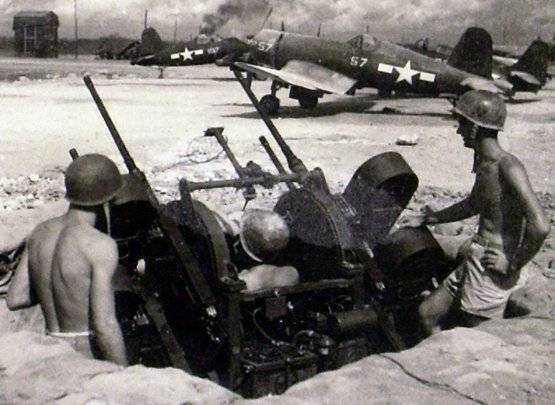
In addition to self-propelled anti-aircraft guns, the American army used the towed quad mounts M51 and M55. ZPU M55 was mainly intended for air defense of stationary objects.
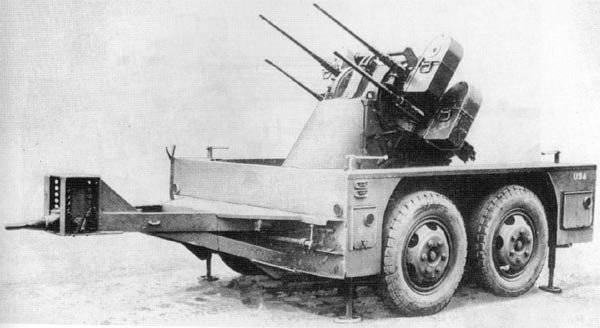
At the firing position, to make the installation more stable, special supports were lowered to the ground from each corner of the trailer. The trailer also housed batteries for the anti-aircraft gun power supply and a charger for them.
ZPU M55 on a single-axle trailer was developed in the interests of paratroopers. Since 1947, for the towed version of the M45 Quadmount anti-aircraft gun, a unified M20 trailer was used, in which the wheel drive was separated in the firing position, and it was hung out on jacks.
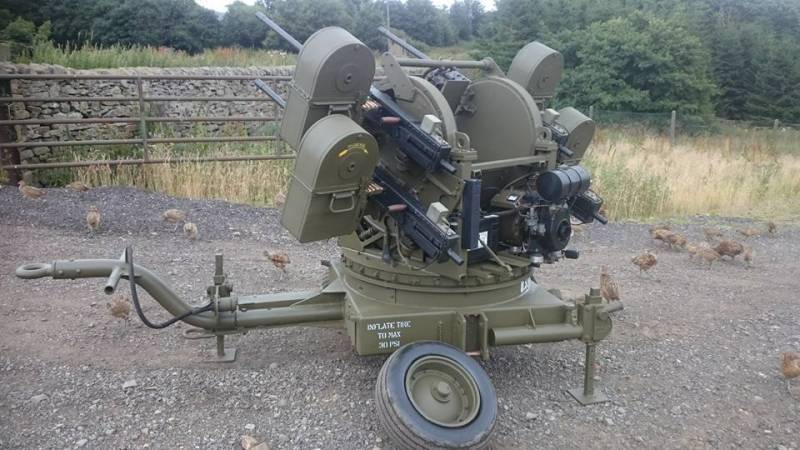
Quadruple Maxson Mounts have proven to be a powerful means of dealing with air targets. Although by the time the Second Front was opened, the Americans had air supremacy, in a number of cases the 12,7-mm ZPU had a very significant impact on the course of hostilities. So, in March 1945, during the "Operation Lumberjack" calculations of the M45 Quadmount successfully repelled attacks by German aircraft on the strategically important bridge over the Rhine in the city of Remagen.
Until the moment when the bridge collapsed under the blows of German bombs, American divisions crossed over to the western bank, and sappers managed to establish temporary pontoon crossings. In total, according to American sources, the Luftwaffe used 248 combat aircraft in air raids, of which approximately 30% were shot down by anti-aircraft cover.
In addition to the air enemy, 12,7-mm quad mounts in some cases were successfully used against lightly armored targets and enemy manpower, earning the nickname "Meat grinder". In the course of street battles, ZSU M16 proved to be very effective against German infantry entrenched in attics and upper floors of buildings.
During the fighting in Korea, the ZSU M16 proved to be in great demand. Relatively light half-tracked armored personnel carriers, protected from small arms bullets, could climb slopes that were inaccessible to tanks.
The firepower of the 12,7-mm Maxson Mount at a distance of up to 1 km made it possible to mow down the advancing North Korean and Chinese infantry in a short time. Towed installations were used to guard headquarters, warehouses, airfields and other important stationary facilities.
Due to the high demand for the M16 ZSU during the hostilities on the Korean Peninsula, and another 1200 M3 armored personnel carriers were converted into self-propelled M16A1 units. In 1954, based on combat experience, some of these vehicles were upgraded to the M16A2 level. During the modernization, additional rear doors were cut on the vehicles for the landing of the crew and troops, and the power of the generator and the onboard ammunition were also increased. Service ZSU M16 in the US military continued until the mid-1960s. They were written off after the abandonment of the M3 half-track armored personnel carriers and the transition to the M113 tracked armored personnel carriers with light alloy armor.
Although in 1967, the US Army adopted a 20-mm M163 Vulcan SPAAG based on the M113 armored personnel carrier, this did not lead to an immediate abandonment of the M45 Quadmount towed ZPU. Quadruple 12,7 mm machine gun mounts were installed in the back of a 2,5 ton M35 or a 5 ton M54 truck.
During the war in Southeast Asia, trucks with a ZPU M45 Quadmount were used to escort transport convoys. The 12,7 mm mounts with a high fire density could quickly sweep the jungle with machine-gun bursts. Such installations were also used to defend military bases. Sometimes, for zeroing, a rifle caliber machine gun was additionally attached to the ZPU.
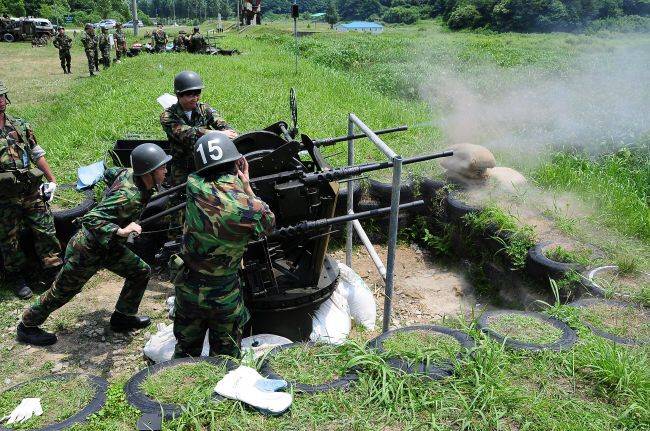
At present, 12,7 mm machine gun mounts cannot be considered a modern air defense system. However, they are still in service in a number of countries. It is reliably known that the M45 Quadmount ZPU until recently was operated in Turkey, Taiwan and South Korea. In the South Korean army, they are permanently located at defense strongholds near the demilitarized zone and are mainly intended for firing at ground targets.
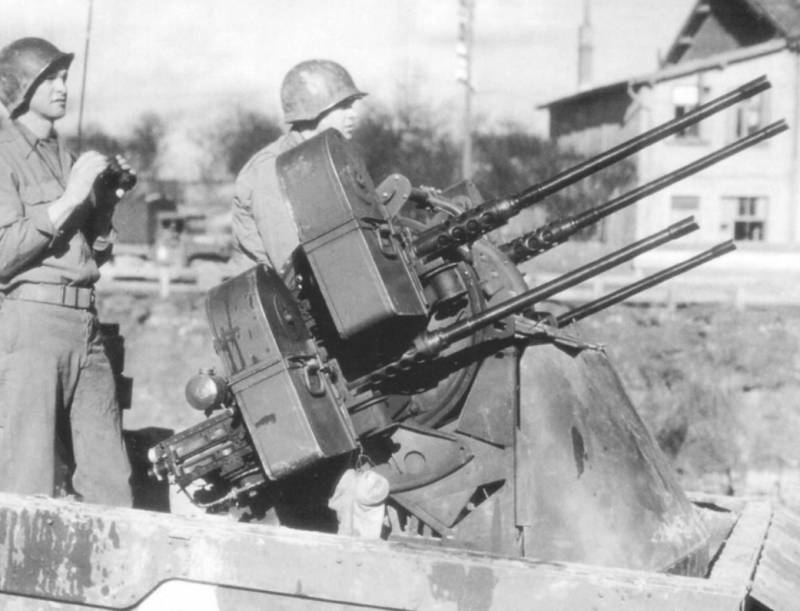
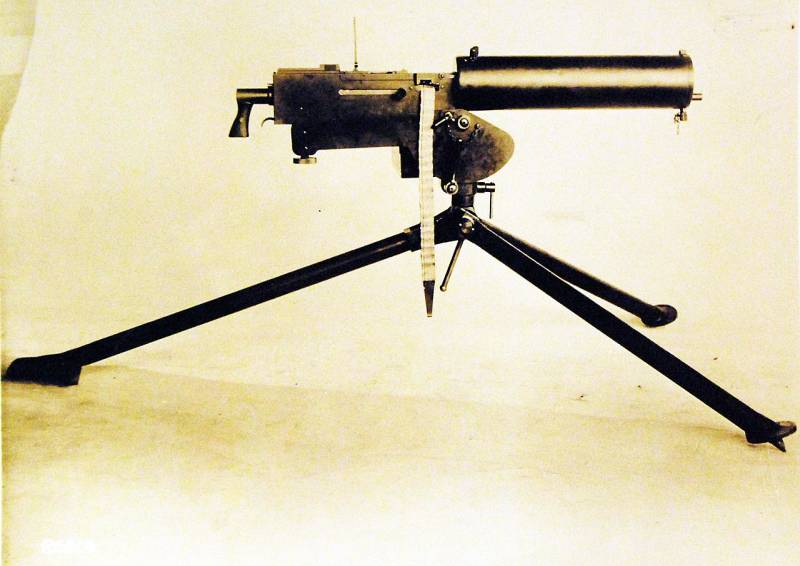
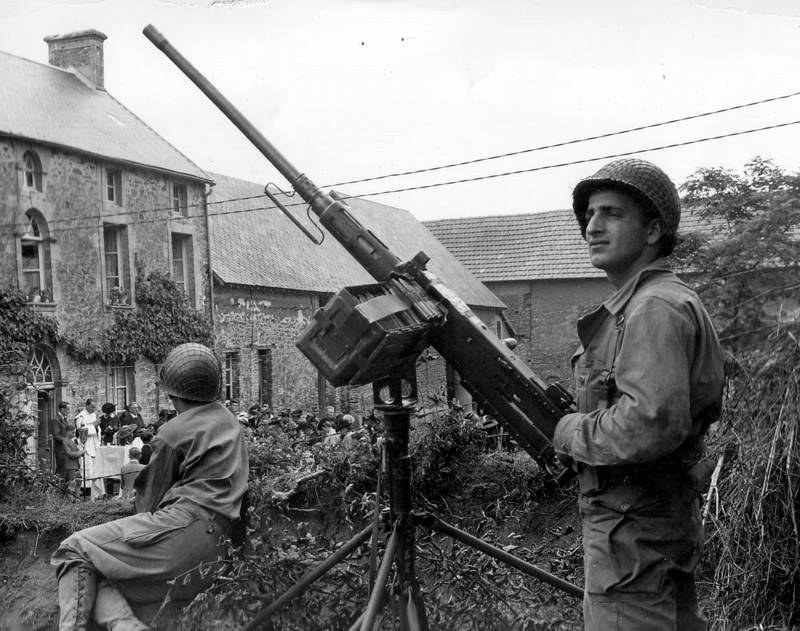
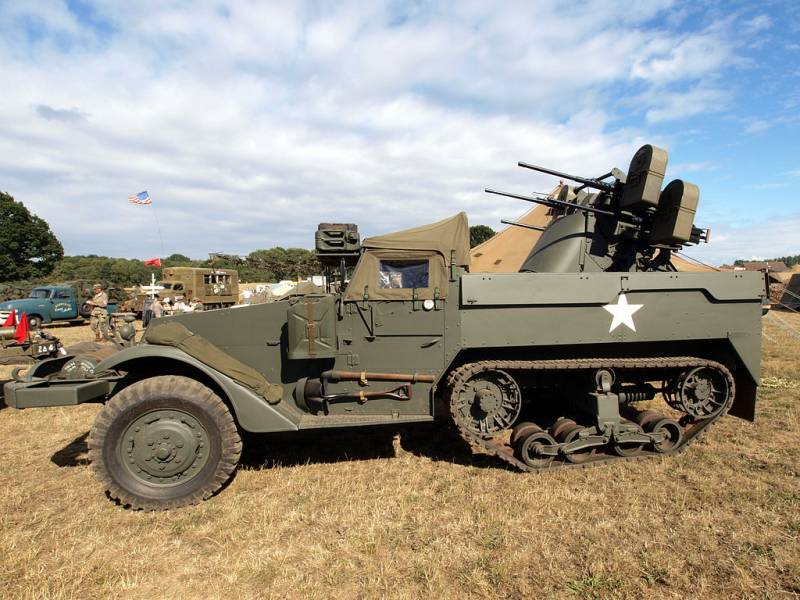
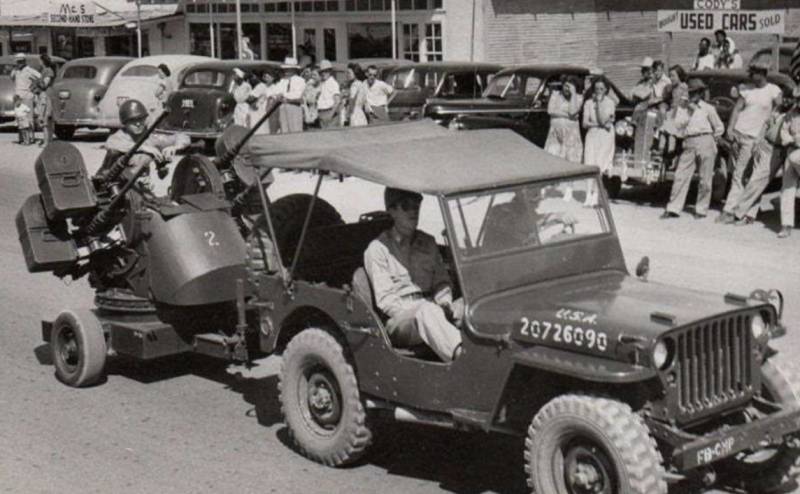
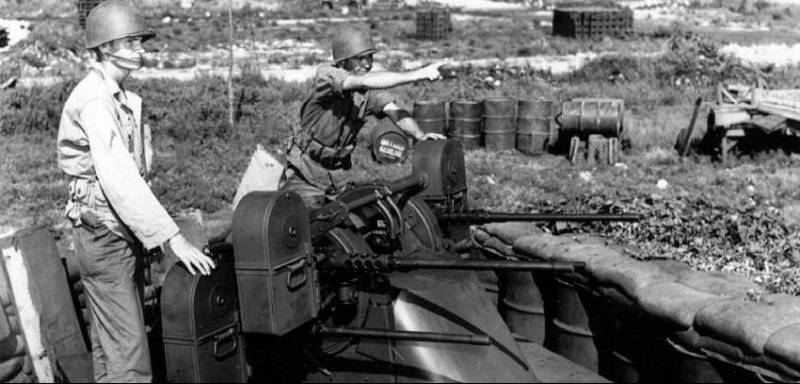
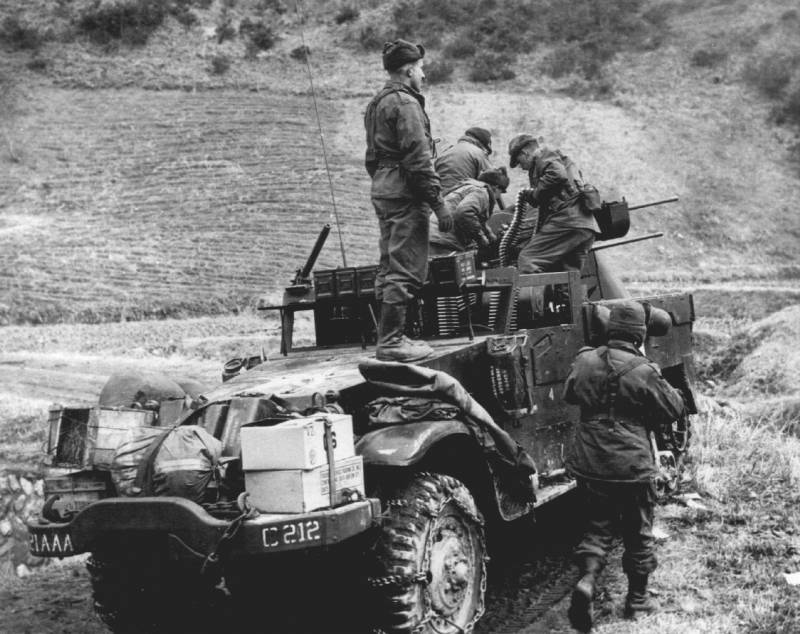
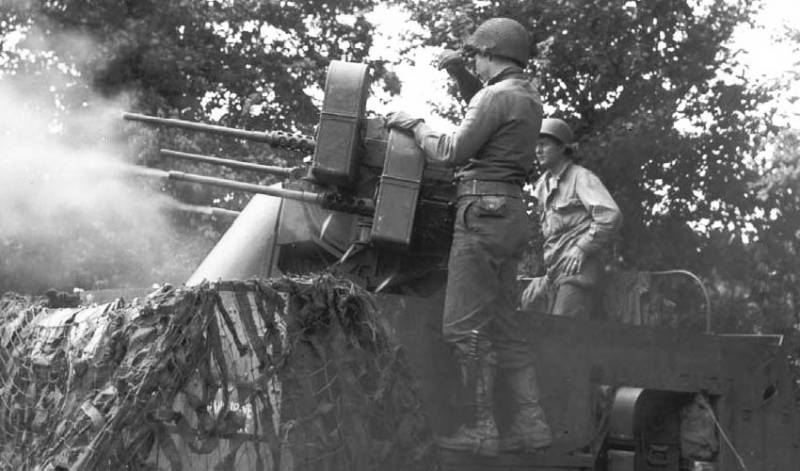
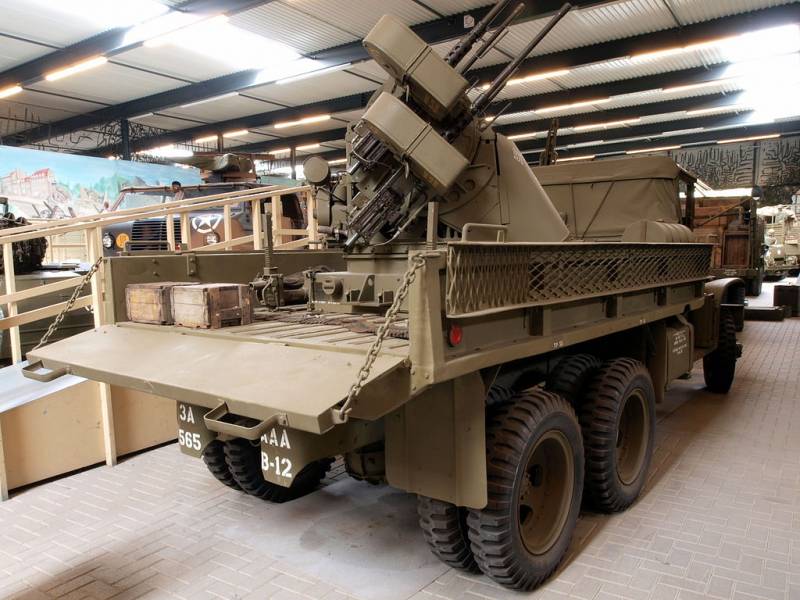

Information